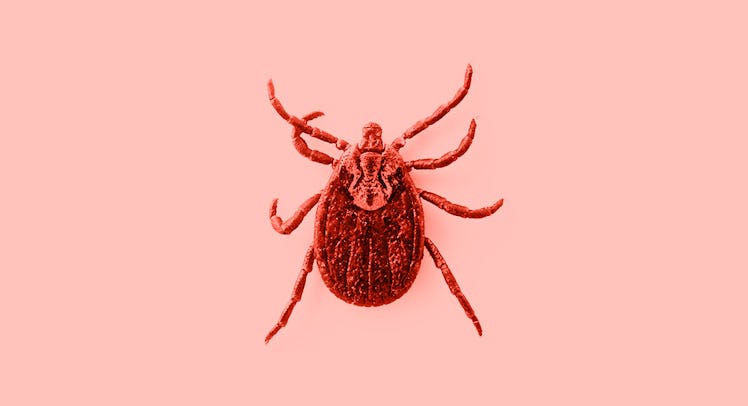Lyme Disease Is On the Rise. Here’s How to Protect Your Family
If your kids are going outside — and for god's sake, they should be — then you need to read this.

Lyme disease is a fickle beast. Lyme disease rashes are hard to ID, Lyme disease tests are notorious for false positives (and negatives), and Lyme disease treatments get all fouled up with misdiagnoses. At least we have a very good handle on the source of the disease.
Yes, ticks are everywhere. For many years the arachnids (them being arachnids makes it worse somehow, doesn’t it?) have been expanding into new territories and bringing with them tick-borne illnesses — with Lyme disease at the front and center. In fact, thanks to the increasing number of ticks, diseases like Lyme and spotted fever doubled between 2004 and 2016 according to the CDC. And that should give parents pause because as kids frolic across American lawns and on through wooded trails they will be exposed to ticks. But with prevention and attention, parents can help protect kids from Lyme disease and other tick-borne pathogens
“Lyme disease originated in Lyme Connecticut. It’s always been a big deal in the northeast,” explains Dr. Sylvia Owusu-Ansah a pediatric emergency medicine physician and America Academy of Pediatrics Fellow at UPNC Children’s Hospital Pittsburgh. “The most recent CDC map shows it’s most heavily represented in the Northeast and mid-Atlantic, but it has been spreading into North and south Carolinas an into Pennsylvania.”
Owusu-Ansah notes that in any area where ticks are common parents need to be vigilant about ticks. That means even in states with marginal tick populations parents should still check kids after a walk in the woods. But for kids in areas where diseases like Lyme are endemic, parents should be checking kids even if they’ve ventured no further than the edge of a suburban lawn. After all, ticks are often carried by deer and Owusu-Ansah stresses, “deer are everywhere.”
But it’s important for parents to understand that when checking for ticks there are areas on a child’s body where parents should pay close attention. “Do a head to toe check,” Owusu-Ansah says. “Particularly in areas where you wouldn’t normally look, like inside the belly-button and behind the knees, around the waist and the hairline of the scalp.”
Aside from a manual check for ticks there additional preventative measures that parents can take. For instance, dressing a child in light colors, or even white clothes will help parents see ticks before they find their way to a child’s skin. Also, having a child take a shower after being outside can help kids find ticks and wash away those that have not bitten and are not feeding.
Owusu-Ansah also says that if parents elect to use repellant, it should contain at least 20 percent or more of DEET. But parents can treat a child’s clothing with a mild pesticide called Permethrin. “It does not have a lot of side effects and you’re not putting it on your kid’s skin,” she explains. “You can put it on boots, pants, socks and even tents.”
But sometimes ticks may be able to slip past even the most vigilant and proactive parent. If a tick is found feeding, it’s important for parents not to panic. It’s far better to take a breath, steady your hands and remove the tick as soon as possible with tweezers. Importantly, manual removal using tweezers is the only recommended method. Other methods that might use petroleum jelly or the smoldering end of a match (yeah) are old wives tales and ineffective.
“If a tick has bitten the child’s skin, the best way to remove the tick is with regular old tweezers,” Owusu-Ansah stresses. “Grasp the tick by the head and try to remove the entire tick in one movement to the best of your ability, especially the head because that’s where the trouble comes. Pull the tick away from the body in a steady motion with even pressure. No twisting or jerking.”
Once the tick is removed it’s fine to wash the area with soap and water and allow it to heal, even if there are parts of the tick remaining in the skin. But for those parents who live in Lyme-disease endemic areas, the next step should be to have their child see a physician within a couple of days of the bite. The doctor will likely give the kid a prophylactic dose of antibiotics.
Even if a parent hasn’t seen a child being bitten by a tick, there are common Lyme symptoms to look out for including joint pain and a distinct rash. “If a child has a rash that looks like a target, like the store, a physician will treat for Lyme,” Owusu-Ansah explains. “Treating for Lyme is a couple of weeks of antibiotics. It’s not the same as the one-time treatment.”
She also notes that should a child get Lyme disease, parents should not beat themselves up. The disease has become more manageable in recent years and with proper treatment and management, kids who get Lyme disease can live happy normal lives.